Text
David O. Selznick gave roles to a number of women that made them spectacular stars: Vivien Leigh and Olivia de Havilland in Gone With The Wind; Joan Fontaine in Rebecca; and Ingrid Bergman, who started her American career under his guidance, in Intermezzo. Such lesser but still very popular players as Guy Madison, Rhonda Fleming and Rory Calhoun also began with him. He wanted to make a young actress named Phyllis Isley, whom he renamed Jennifer Jones, his greatest success. As Pearl, the half-breed heroine of his wild and beautiful masterpiece Duel In The Sun, she was a marvelous overwrought minx, and the star he had hoped for: they were married. A neurotically self-obsessed, other worldly quality about her fitted her perfectly for Flaubert's Madame Bovary and King Vidor's Ruby Gentry, and opened a host of possibilities to her: as a candidate for sainthood in one film, a troubled ghost in another, a tormented bride in the third, and a string of sexually frustrated, frustrating women who tantalized but never bored their audience. She was too complex to be bottled, her quirky mannerisms and unusual beauty retained their ability to keep one guessing and hoping for the role that would bring all the strands together, and produce the movies' most absorbing case study of twentieth-century womanhood.

139 notes
·
View notes
Photo
Ann Sheridan nevertheless conveyed a kind of attitude to audiences that comes with having had to fight through all kinds of situations. She seemed confident, unhesitant, and she wore her experience of having fought off men as if it were a Girl Scout badge. Delivered in a low, husky voice, her "Oh, yeah, buster?" was tough but also kind-hearted and warm. She never seemed genuinely hard, only cheerfully realistic. She had a sense of humor about herself, a permanently amused quality. Though she was tough, she was never mean or nasty.
Sheridan could dance some and her singing voice, for instance, was a warm contralto. She could play in musicals as well as comedies and dramas, and she was built to wear the clothes of the 1940's. She was one girl who could carry off any crazy getup, no matter what was stuck on her -- feathers, chunky jewelry, or some hat perched on her head sideways looking like it was falling off her head. As with Lana Turner no outfit ever wore Ann Sheridan. Today, Ann Sheridan does not get the credit she deserves. Actresses who had a hard edge to them or a hint of the backroom experience were seldom leading ladies unless they were Mae West or Jean Harlow. (Both West's and Harlow's approach to this backroom experience was comic.) Female stars like Sheridan were usually female sidekicks: Una Merkel, Eve Arden or feisty like Veda Ann Borg, or ditzy blondes like Marie Wilson or Toby Wing. Sheridan elevated this type, moving it above the title. She represented something real, and the Warner's roster of stars needed her to match its very grounded leading men. Like them, she seemed to have been there and back and lived to laugh about it. Sheridan was definitely talented she had a wonderful combination of her singing, her glamorous looks (she was definitely made for Technicolor), and her ability to deliver a tough line with humor making her the perfect studio contract player.

376 notes
·
View notes
Text
The lady in the photo is Kristine Miller

Ann Richards, 1948 🎞
32 notes
·
View notes
Text
Julie Adams (born Betty May Adams on October 17, 1926 – and she passed away on February 3, 2019) she was billed as Julie Adams toward the beginning of her career, and later in her career she was primarily known for her numerous television guest roles. She used her real name until 1949, when she began working for Universal-International, the same studio where she met future stars such as James Best, Piper Laurie, Rock Hudson and Tony Curtis. She then became "Julia" and eventually "Julie". In 1954, she explained the latter change, "The studio picked Julia, but I never have felt comfortable with it. I just like the name Julie better, and the studio gave me permission to make the change." The film that Adams will be remember for would be The Creature From The Black Lagoon (1954, Universal-International) as the beautiful ichthyologist Kay Lawrence. Signed to a seven-year contract (and having her legs insured by Universal to the tune of $125,000 by Lloyds of London), Julia seemed destined to remain perpetually typecast as a western heroine. A comely actress with soft, classical features, she often gave affecting performances in what amounted to little more than bread-and-butter pictures.







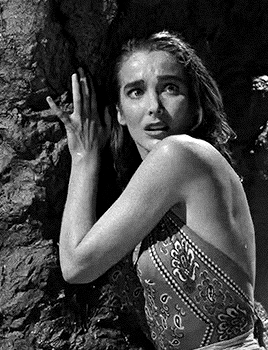
CLASSIC HORROR HEROINES
JULIE ADAMS as Kay Lawrence in
CREATURE FROM THE BLACK LAGOON (1954) dir. Jack Arnold
1K notes
·
View notes
Text
When Veronica Lake arrived in Hollywood in 1939 she came in with the decade but was gone by the end of it. But at least Lake and the public did have a good time while it lasted. For a time Lake held some sway over some cinema circles. When Joan Bennett went from blonde to brunette her hair color changed the course of her career. Bennett went from sweet leading lady to dangerous femme fatale overnight while her career soared higher than before lasting until the 1980"s. Veronica Lake's blonde hair was styled to completely cover one side of her face becoming her trademark was very successful. The name of her hair style was known as the "Peekaboo Bang" Her initial cinema popularity was extended by a fortuitous teaming with stone-faced Alan Ladd. They created a new brand of screen lovers: calculating, conscienceless, and as self-possessed individuals. Their love scenes together were the epitome of restrained sexuality, filled with non-sequitur conversations, wisps of cigarette smoke, and bristling icy stares. Ah, the tension which would build up in a film as one waited for the invitation in that strangely husky voice, in the provocative swing of of the sequinned box shoulder, to reach its consummation at a moment of abandonment when the face-obscuring hank of blonde hair would be swept aside in a embrace and reveal the full glory of her large, lustrous eyes, the slightly sunken cheeks, and then her heavily made-up lips which mark the true essence of the 1940's floozy.
In 1941 Lake was given the opportunity star in her most successful film French director Rene Clair's supernatural comedy I Married A Witch." Lake received some of her best notices of her career. She was beguiling, she was biting and she could be scampish, but she was a lot fun. She plays Jennifer a witch who along with her (Cecil Kellaway) were burnt at the stake by Puritans some 300 years ago before dying they both put a curse on him and all his descendants. Both are released to present day when a freak lightning bolt hits the tree trunk and they are free. Jennifer immediately makes trouble gubernatorial candidate Fredric March where eventually falls in love with thus losing all her supernatural powers and who out foxed March's fiancee a young Susan Hayward. They marry and have three children and as the film ends one child is shown wearing a "Peekapoo Bang" hair style.
Constance Frances Marie Ockleman was born on November 14, 1922 in Brooklyn New York. Her parents were Harry Eugene (he was of German and half Irish descent) and Constance Charlotta (Trimble, her mother was of Irish descent). Her father worked in the Brooklyn Navy Yards as an employee for an oil shipping company. When Connie was 12 her father died in an explosion on a ship. Two years later her mother remarried to Anthony Keane soon Connie took his last name as her own. In 1934 her step-father was diagnosed with tuberculosis. They moved to Miami, Florida. Two years after graduating from High School her natural beauty charm and a talent for acting prompted the family to move to Beverly Hills, California, where Constance was enrolled in the well known Bliss-Hayden school of Acting. Constance around this time had been diagnosed as a classic schizophrenic but her parents thought acting might be seen as a treatment. They did not have to wait too long.
After doing a few bit roles at Paramount, Paramount thought that she would be perfect for a role in a big budget A-picture I Wanted Wings even thought she was the female lead her name was seventh in the cast. Also Paramount wanted her name changed to Veronica Lake and with that Paramount signed the new Veronica Lake to a standard seven-year contract. The big build-up now began in earnest. Her next picture was the comedy by Preston Sturges Sullivan's Travels costarring Joel McCrea. For much of the film Lake's hair was held under a cap. For her next film she made her match when she starred on This Gun For Hire and costar was Alan Ladd and audiences got to her Lake's new sensation her "Peekaboo Bang" hair style that swept the country. Ladd and Lake proved so successful that Paramount starred them together for an additional three more films and they also stared in three all-star musicals where they did not have scenes together: Star Spangled Rhythm (1943) the highlight of the musical was the one number titled: A Sweater, A Sarong and a Peekaboo Bang" this song was a spoof on what made famous actresses Paulette Goddard, Dorothy Lamour and Veronica Lake made famous. The other all-star musicals were: Duffy's Tavern (1947) and Variety Girl (1948) in between Lake had a few more successful films as the two other films that so costarred with Alan Ladd: The Glass Key (1943) and The Blue Dahlia (1946) other less successful were The Hour Before Dawn (1944), Hold That Blonde (1946) Another film that Lake will be remembered for which I consider her best was in So Proudly We Hail (1943) where she played Lieutenant Olivia D'Arcy as nurses in the South Pacific who are captured by the Japanese. Her two other costars were Claudette Colbert and Paulette Goddard. The scene that still packs quick q punch had Lake calmly walking up to a group of Japanese soldiers while holding a hand grenade when she blows up herself and all the soldiers. She had lost her fiancee and had made a vow to revenge his death
She died there on July 7, 1973, of acute hepatitis and acute kidney injury. Her son Michael claimed her body. Lake's memorial service was held at the Universal Chapel in New York City on July 11th. Veronica was only 53 years old when she passed away. A sad and final ending to a screen beauty.
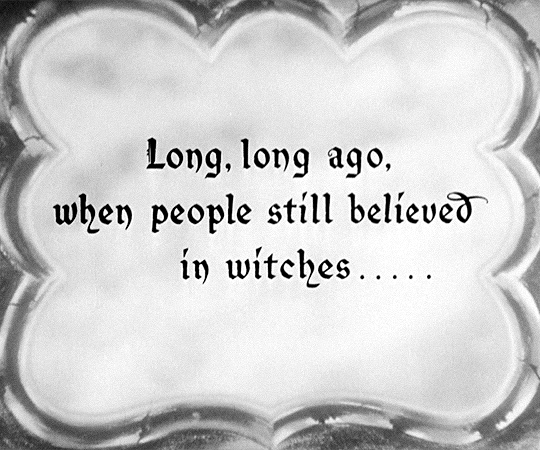
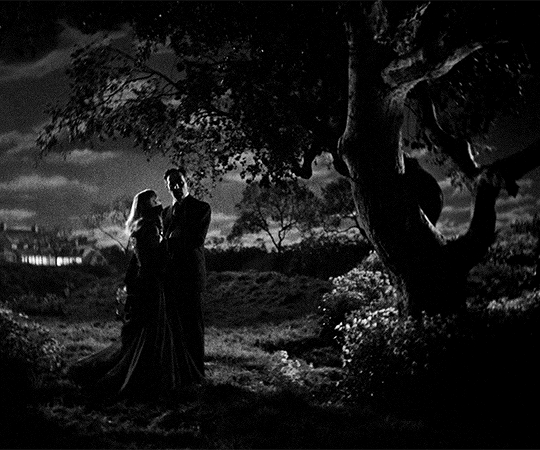
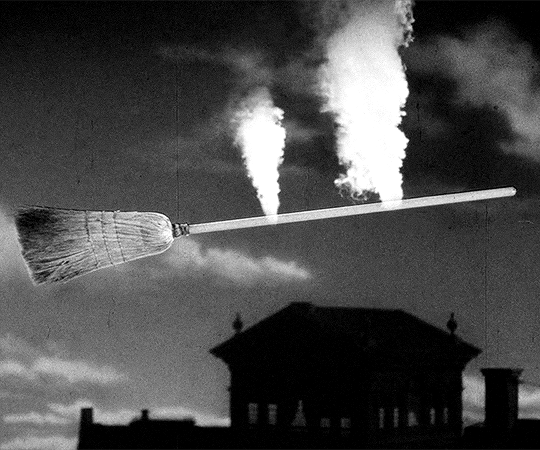


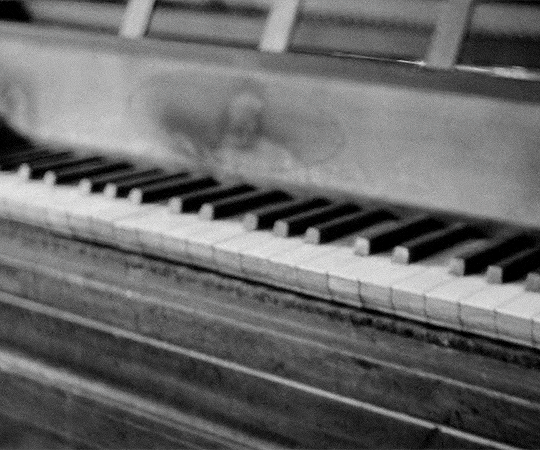
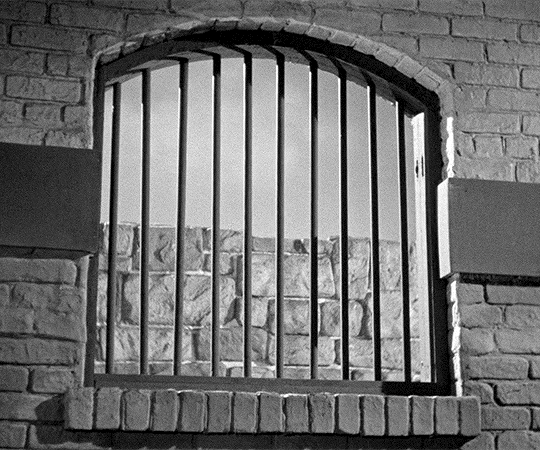

Goodbye, Jennifer. Be a bad girl.
I MARRIED A WITCH
1942, dir. René Clair
1K notes
·
View notes
Text
Sometimes you can have too much talent when you make everything that you do onscreen look so easy and smooth that usually you're not appreciated. That would seem to have happened to versatile actress Jean Hagen. When Hagen was under contract to Metro-Goldwyn-Mayer (1949 - 1953), many of her films were B-pictures in which Hagen would give one hundred ten percent of herself, elevating mediocre and pedestrian material into what director John Huston described as a "wistful, down-to-earth quality that was rarely seen onscreen."
Huston had directed Jean Hagen in The Asphalt Jungle (1950, MGM). Jean Hagen was the only Academy Award nomination in the Acting category for Singin' In The Rain (1952, MGM). Hagen's nomination was for Best-Supporting Actress in 1952 but lost out to Gloria Grahame in The Bad And The Beautiful. Its her performance as Lina Lamont that she will always be remembered for, as the over-the-top silent film star whose voice sounded like fingers on a blackboard which in turn keeps her out of the talkies. It's a pity that Hagen could not find a breakout role that would set her apart from other actresses.
Raised in Chicago and Indiana born on: August 3, 1923 her name was originally Jean Shirley VerHagen. In 1950 Hagen scored another triumph in the Film Noir classic The Asphalt Jungle but all eyes were on the second female lead her name was Marilyn Monroe. Jean Hagen's remaining films at MGM after Singin' In The Rain were pretty much all downhill except for her performance as the wife of Charlie Castle's best friend (Jack Palance) in The Big Knife (1955, United Artists).
After leaving MGM Hagen joined the cast of the television sitcom Make Room for Daddy (1953). She was nominated for three Emmys for her role as Margaret Williams, but Jean became disenchanted with the rather colorless wife-and-mother role and left the series after four seasons. Marjorie Lord replaced her as Danny Thomas' perky second wife. A prolonged illness necessitated her early retirement in the mid-1960s with her entering the Motion Picture Home and Hospital for the rest of her life. A desire to act one more time happened in 1977 when she appeared briefly as a landlady in the TV-movie Alexander: The Other Side of Dawn (1977). Jean Hagen passed away from esophageal cancer on August 29, 1977 she was just 54 years old.


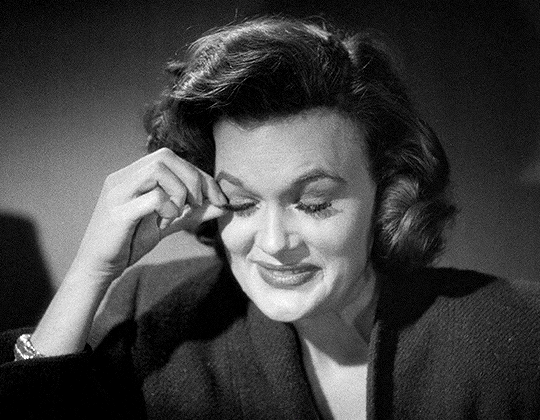
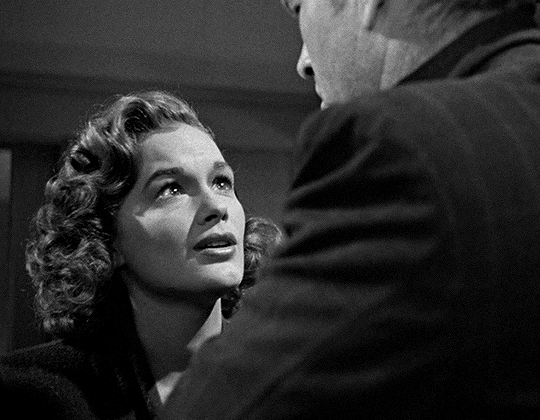
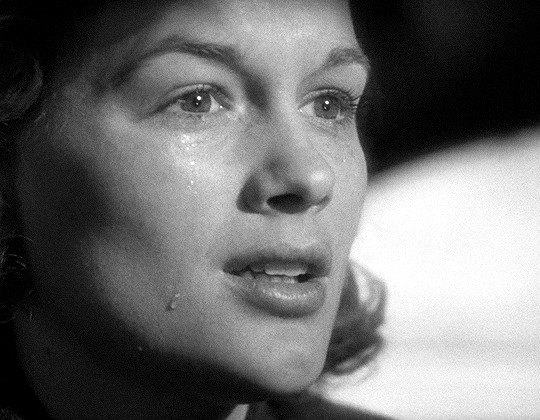


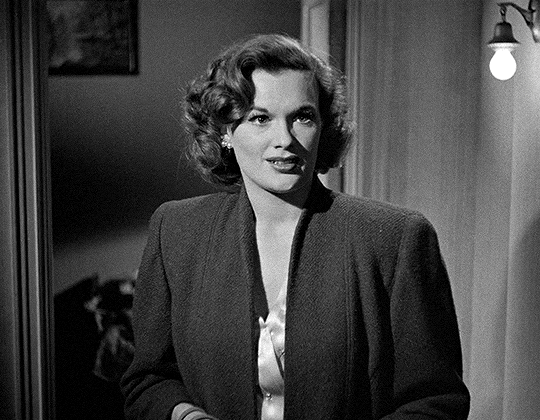
JEAN HAGEN as "Doll" Conovan in
THE ASPHALT JUNGLE (1950) dir. John Huston
305 notes
·
View notes
Text
Lauren Bacall was given the moniker "The Look" while Lizabeth Scott was called "The Threat" which derived from a critic's description of Scott: "She's the Threat, to the Body, the Voice and the Look." "The Body" was (Marie McDonald), "The Voice" was (Frank Sinatra) and "The Look" was (Lauren Bacall). Of all her films the one that she will be remembered for will be Too Late For Tears (1949, United Artists) here she plays Jane Palmer a femme fatale in every sense of expression here displaying a complete lack of conscience and empathy as she murders anyone who gets in her way. She was so convincing as the seductive, husky-voiced scheming who is pathologically unable to understand the enormity of her crimes. One of her first victims was her poor husband who didn't have a chance. Even the presence of Dan Duryea a noted Noir villain himself could not even save himself against Scott. Of her 22 films, she was the leading lady in all but one. What set her apart from other film noir actresses was her unmannered projection of the now archaic tough girl which was direct and vibrant thus elevating it from the confines of its times. Scott's style of acting, characteristic of other film actors of the 1940s -- a cool, naturalistic underplay derived from multiple sources -- was often not appreciated by critics who preferred the more emphatic stage styles of the pre-film era or the later method acting styles. With rare exceptions in films as Paid In Full (1950,Paramount Pictures) here as the good sister who sacrifices everything even her own life for her self-centered younger sister played with verve by Diana Lynn. Usually Lizabeth Scott was stereotyped on the screen as the corrupt chanteuse who had no desire or will to change her sinister ways. Meaning that Scott was doomed to find a worthwhile good guy to love her but only when it was too late and she had already passed the point of redemption. In 2003, film historian Bernard F. Dick interviewed Scott for his biography of Wallis. The results was an entire chapter titled "Morning Star." In the chapter, the author observed that during the interview, Scott (then 80 or 81 years old) was still able to recite her opening monologue word for word from the play "The Skin of Our Teeth", which she had learned six decades earlier. Lizabeth Scott died of congestive heart failure at the age of 92 on January 31, 2015.

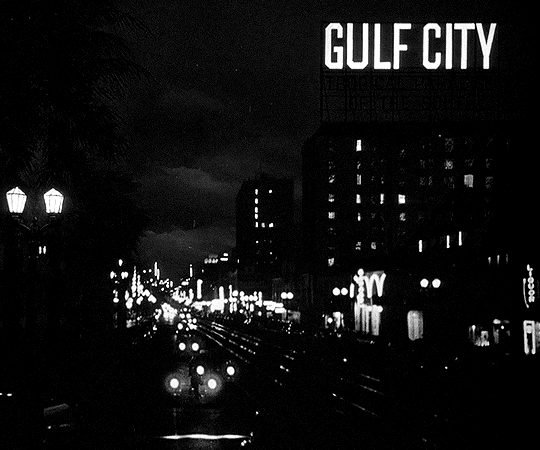
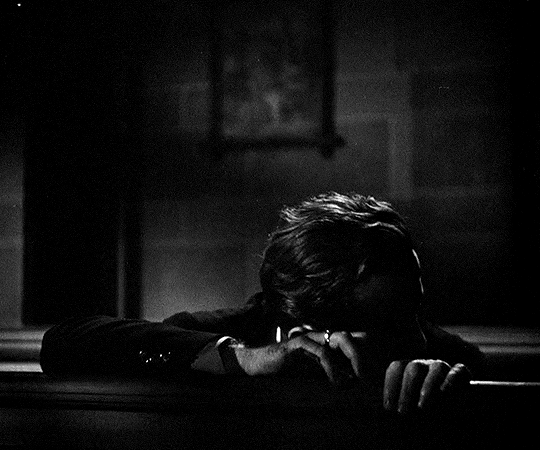


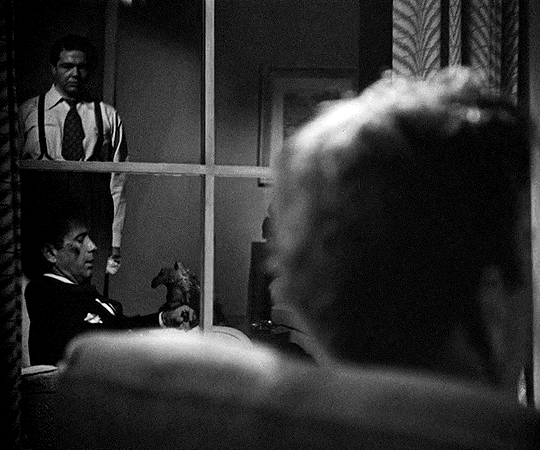

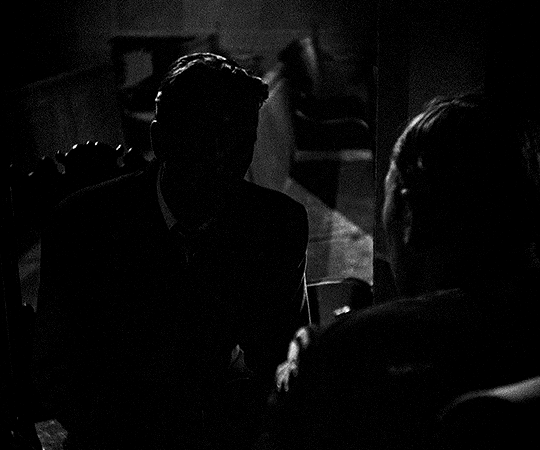

Don't you love me?
- That's the tough part of it, but it'll pass. Those things do, in time. And there's one other thing—I loved him more.
DEAD RECKONING
1947, dir. John Cromwell
652 notes
·
View notes
Text
Linda Darnell was featured or starred in a great number of costume and adventure dramas that would have been all right without her gained enormously from her participation. Darnell was stunning to look at who developed into a voluptuous beauty whose perfect complexion was always an asset as she made the transition from virginal heroines in mantillas and lace to women not averse to revealing a tough streak beneath the deceptive sweep of their wardrobe. Like many of the popular stars during the contract system, her career tailed off as soon as she left her home studio 20th Century Fox. Darnell’s popularity in her time had been real enough and would have been the same had she worked at any other studio. Her success was the result of a system which produced many films, and many stars which offered the movie-going public a large selection from which to choose their favorites. Linda Darnell had proved to be a very popular.

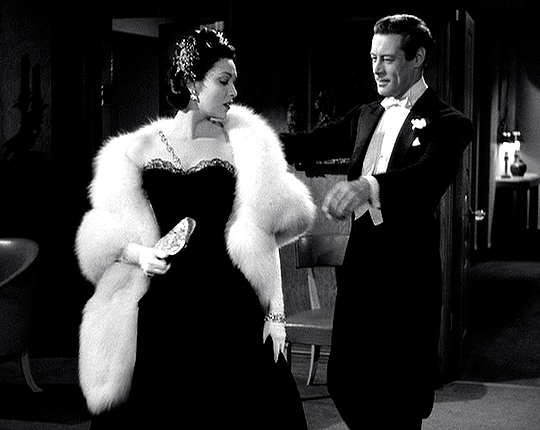
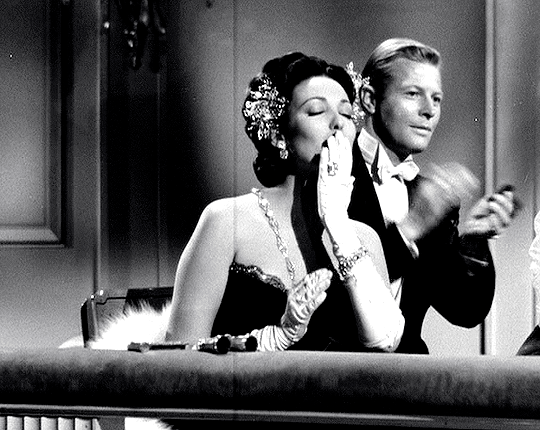


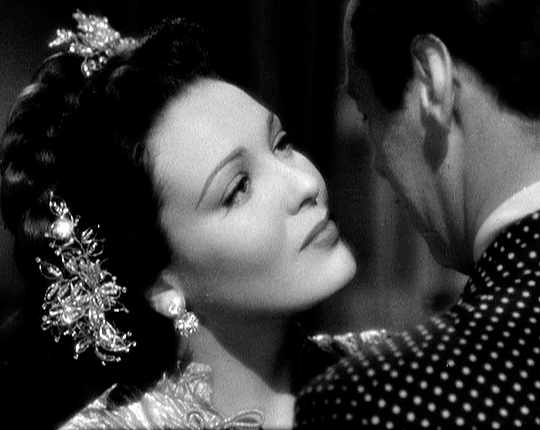
Linda Darnell in UNFAITHFULLY YOURS
1948 | Preston Sturges
682 notes
·
View notes
Photo
The woman pictured in the photo was the super model Dovima who along with Suzy Parker and Jean Patchett formed what was nicknamed the "Big Three" in the modeling industry during the 1950's and 1960's. Dovima was born Dorothy Virginia Margaret Juba on December 11, 1927 in Jackson Heights, New York City. When she was ten she contracted rheumatic fever and was confined to bed. Although the usual treatment was a year’s bed rest, her overprotective mother kept her home for the next seven years. Richard Avedon called Dovima ''The most remarkable and unconventional beauty of her time." She was walking out of an Auto-mat in 1949 with her first husband, Jack Golden, when a woman asked her if she had ever been a fashion model. The woman said she worked for Vogue magazine and invited her to have some test photographs made. The next day she was photographed by Irving Penn. She kept her mouth closed because of her bad teeth and the photo had a mysterious look that reminded those who saw it of the Mona Lisa. Dovima was a hit. Her spread in Vogue established her as an instant star, and not long afterwards, she became the highest paid model of her era. Jerry Ford of the Ford Model Agency said, "She was the super-sophisticated model in a sophisticated time, definitely not the girl next door." Within a year she was one of the most popular models at the Ford Model Agency, where she made $30 an hour when the other leading models made $25. Dovima was without a doubt the most glamorous model of the 1950's. She not only succeeded Dorian Leigh as the highest paid fashion model of her day, but she embodied the image of the worldliness and beauty that defined the tone of the era. She was regal, elegant, unapproachable, yet desirable. Richard Avedon was her favorite photographer, and Dovima said working with Avedon, “We became like mental Siamese twins, with me knowing what he wanted before he explained it. He asked me to do extraordinary things, but I always knew I was going to be part of a great picture.” Together they created her Fifties haute couture look that was all about glossy red lips, arched brows, strong eyeliner and endless limbs. For Avedon, the feeling was mutual. He said of her, “I loved Dovima. She came from Brooklyn and had more elegance than most models. She had the most extraordinary sense of ease. She didn’t have an overpowering energy but neither was she timid. And she had an understanding, a feeling for the clothes. I worked with her for about ten years until Diana Vreeland came to the magazine. Diana felt Dovima had been seen too much and wanted someone new and different.” In 1955, Avedon created one of the most famous and beautiful fashion photographs of all time “Dovima and the Elephants”. Graceful and fragile Dovima in a Dior dress contrasted with the symbol of the inviolability of life – elephants. ‘Dovima with the Elephants’ became iconic. Taken at the Parisian circus in August 1955, it was sold for $1,151,976 in 2010. The gown was the first evening dress designed for the House of Christian Dior by his new assistant, Yves Saint-Laurent. When Dovima had a baby girl on July 14, 1958 she named her Allison. Dovima officially stopped modelling in 1962, ”I didn’t want to wait until the camera turned cruel." With no other television roles or modelling offers in sight, Dovima moved to Fort Lauderdale, Florida in 1974 to be closer to her elderly parents. In 1984, she found employment as a hostess at Two Guys Pizzeria. She worked there until her death. She died on May 3, 1990 of liver cancer at the age of 62.

83 notes
·
View notes
Photo
The El Dorado Apartments was constructed in 1931 it was also another twin-towered building on Central Park West, which fills the entire block-front between Ninetieth and Ninety-first streets. While Emery Roth was working on his San Remo Apartments he was asked to to serve as an associate architect on the El Dorado. The owners of the El Dorado operated out of the Bronx, selected the Bronx-based firm of Margon & Holder as the primary achitects. The exterior design of the building evolved, Margon & Holder shaped the El Dorado according to their own sensibilities. What started out as a classically inspired composition under Roth's guidance ended up as a striking statement in Art Deco design. Clearly, the El Dorado was designed for a less affluent clientele. This is reflected in its architecture. The use of Art Deco styling appealed to the "new money" class which was more conscious of being fashionable and up to date with the latest and up to date with the latest styles in architecture and in home furnishings.
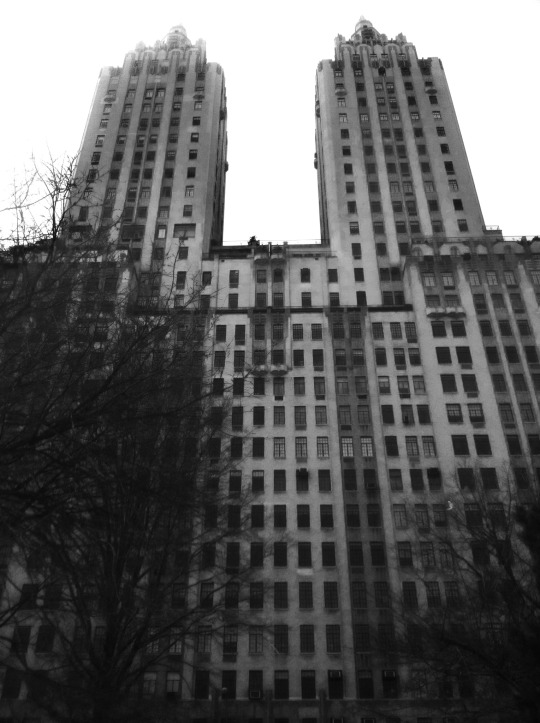
18 notes
·
View notes
Text
The Citroen DS was in production from 1955 thru to 1975 the DS (all Hail The Goddess), is a front mid-engined, front-wheel drive executive automobile. The DS was known for its aerodynamic, futuristic body design; unorthodox, quirky, and innovative technology, and it set new standards in ride quality, handling and braking, thanks to both being the first mass production car equipped with hydro-pneumatic suspension, as well as disc brakes. The 1967 series 3 also introduced directional headlights in a mass-produced car. Citroën built 1,455,746 examples in six countries, of which 1,330,755 were manufactured at Citroën's main plant in Paris, France. The name DS name is also a pun in the French language. "DS" is pronounced exactly like deesse, meaning goddess. At a time when few passenger vehicles had independent suspension on all wheels, the application of the hydraulic system to the car's suspension system to provide a self-leveling system was an innovative move. This suspension allowed the car to achieve sharp handling combined with very high ride quality, frequently compared to a "Magic Carpet. "

174 notes
·
View notes
Text
Pictured here is the Observation Car that was part of the original version of the Twin Cities Hiawatha, which began operating between Chicago and the Twin Cities on May 29, 1935, one of the first streamlined trains ever to be introduced in the U.S.
To design these successors to the Hiawatha's pre-war beavertail cars, the Milwaukee turned to Wisconsin industrial designer Brooks Stevens. “Trains are the brutes of the transportation world,” says Brooks Stevens Design Associates today. “Big, ugly, uninteresting hulks. And that was the passenger trains. Brooks Stevens changed all that. We designed the Olympian Hiawatha for the Milwaukee Road to be a sophisticated mode of transportation. Streamlined and elegant, inside and out, coming and going.” Probably the most famous of the cars in the 1939 Hiawatha were the parlor-observation cars. Like their standard parlors, they had two rows of recliners instead of the traditional fare of 2 person seats as the Hiawatha's 4 coaches had. But at the end of the Beaver Tail, the back of the car sloped downward, giving the appearance of the "beaver tail." The rear of the car had two huge windows facing out back with seats and couches FACING the rear window allowing patrons the ability to watch the scenery go away from them at 100+ mph. The moon visors/fins were not just for looks but helped keep the sun out the their faces.

1K notes
·
View notes
Text
The Theme Building at the Los Angeles International Airport is considered an architectural example of the Space Age design style. Influenced by "Populuxe" architecture, it's an example of the Mid- Century modern design movement later to become known as "Googie." The distinctive white building resembles a flying saucer that has landed on its four legs. The initial design was created by James Langenheim, of Pereira & Luckman, subsequently taken to fruition by a team of architects and engineers headed by William Pereira and Charles Luckman, that also included Paul Williams and Welton Becket. The civil engineer was Richard Bradshaw. Constructed near the beginning of the Space Age, the building is an example of how aeronautic, pop culture, design and architecture came together in Los Angeles.

182 notes
·
View notes
Text
The Case Study House Program produced some of the most iconic architectural projects of the 20th Century, but none more iconic than or as famous as the Stahl House, also known as Case Study House #22 by architect Pierre Koenig. The modern residence overlooks Los Angeles from the Hollywood Hills. It was completed in 1959 for Buck Stahl and his family. Buck Stahl had envisioned a modernist glass and steel constructed house that offered panoramic views of Los Angles when he originally purchased the land for the house in 1954 for $13,500. Stahl had originally begun to excavate and take on the duties of architect and contractor; it was not until 1957 when Stahl hired Pierre Koenig to take over the design of the family’s residence. The house is “L” shaped in that the private and public sectors are completely separated save for a single hallway that connects the two wings. Compositionally adjacent is the swimming pool that one must cross in order to get into the house. The living space of the house is set back behind the pool and is the only part of the house that has a solid wall, which backs up to the carport and the street. The entire house is understood to be one large viewing box that captures amazing perspectives of the house, the landscape, and Los Angeles. Oddly enough, the Stahl house was fairly unknown and unrecognized for its advancement of modern American residential architecture, until 1960 when Julius Shulman captured the pure architectural essence of the house. It was the night shot of two women sitting in the living room overlooking the bright lights of the city of Los Angeles.
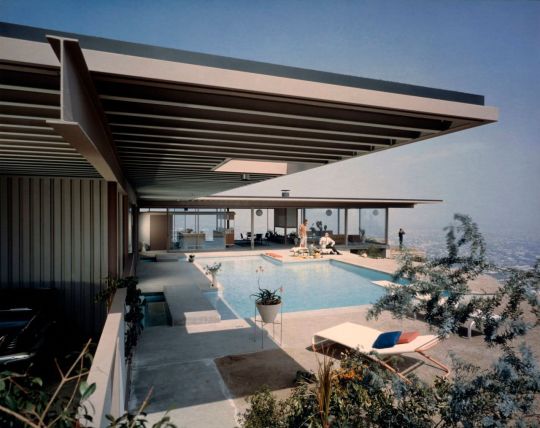
289 notes
·
View notes
Photo
The car was called the Davis Divan which was a three-wheeled convertible built by the Davis Motorcar Company between 1947 and 1949. The brainchild of used-car salesman Glen Gordon "Gary" Davis, it was largely based upon "The Californian", a custom three-wheeled roadster built by future Indianapolis 500 racing car designer Frank Kurtis for Southern Californian millionaire and racer Joel Throne. After building two prototypes in 1947, Davis embarked on an aggressive publicity and promotional campaign for the car, which included numerous magazine appearances, a lavish public unveiling at the Ambassador Hotel in Los Angeles, and a promotional trip across the United States.
At the company factory in Van Nuys, employees worked frantically to build Divans although the model was never put into mass production. Despite raising $1.2 million through the sale of 350 dealerships, the Davis Motorcar Company failed to deliver cars to its prospective dealers or pay its employees promptly, and was ultimately sued by both groups. The company's assets were liquidated in order to pay back taxes, while Gary Davis himself was eventually convicted of fraud and grand theft and was sentenced to two years at a "work farm" labor camp.

372 notes
·
View notes
Photo
The building under construction is the Seagram Building constructed from 1954 to 1958 the architects were Mies van der Rohe and Philip Johnson. The building was commissioned by Samuel Bronfman, founder of the Canadian distillery dynasty Seagram. Bronfman's daughter Phyllis Lambert, was twenty-seven years old when she took over the search for an architect and chose Mies van der Rohe (1886 -1969), a pioneering modern master of what he termed "skin and bones" architecture. Mies who designed the elegant, deceptively simple thirty-eight story building along with Philip Johnson (1906 - 2005), emphasized the beauty of the structure and fine materials, and set the building back from Park Avenue, thus creating an urban oasis with the building's plaza.

Park Avenue and 51st Street, looking south towards the New York General Building (now the Helmsley Building), June 1959. Building construction is visible to the right. St. Bartholomew’s Church (with flags) is slightly visible on the left.
Photo: Angelo Rizzuto (Anthony Angel) via LoC
91 notes
·
View notes